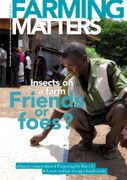Insects are one of the many components of an agro-ecosystem. Their presence can lead to severe farm losses, yet they also make many beneficial contributions. Research and experimentation at a local level can help us identify ways to restore the balance between the different components, and so enhance ecosystem resilience – and yields.
Iran: Neem in the Gulf
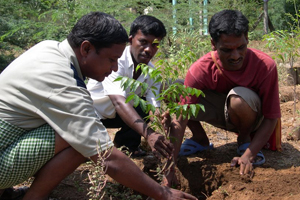
Their use, however, is not new. More than a thousand years ago, Persians were using pyrethrum species, and in particular species of the genus Chrysanthemum, to control the presence of insects in their fields and also against lice (preparing what is still known as “Persian powder”). Iranians are now also benefitting from the neem tree.
Some twenty years ago, neem trees were seen in the Qeshm and Kish islands in the Persian Gulf, and also in the Bandar-Abbas county (all of them part of the Hormozgan province). Since then, they have spread in these areas, and farmers have started to see why this tree is known as the “village pharmacy” in India, or why others refer to it as “the tree to solve global problems”.
Researchers are now exploring whether neem can be cultivated in the country’s other provinces, beyond the Persian Gulf, and provide the basis for a new Persian miracle.
More information?
Contact Ahmad Mahdavi at the University of Tehran / Sustainable Agriculture and Environment.
E-mail: biomahda@gmail.com
Brazil: Trees and predators
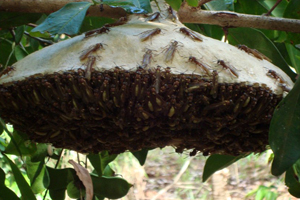
Do trees also help in terms of biological control? This was one of the questions posted by researchers at the Luiz de Queiroz College of Agriculture in São Paulo, Brazil. The incidence of the leaf miner (Leucoptera coffeella) is high in most coffee fields in the Pontal do Paranapanema region.
As part of the Café con Floresta project, small-scale farmers in this region are encouraged to grow coffee within an agroforestry system. The presence of trees in their one-hectare fields has encouraged a dramatic increase in the number of miner predators (wasps of the genus Brachygastra, Polistes or Polybia) in their fields.
Working together with farmers, researchers have also found a direct relationship between the number of tree species present in each field and the number of parasitoids (and a lower incidence of Leucoptera). The message seems to be clear: the greater a farm’s biodiversity, the better the balance between the species living in it.
More information?
Contact Paulo Rogerio Lopes and his colleagues at the Luiz de Queiroz College of
Agriculture.
E-mail: biocafelopes@bol.com.br
Senegal: Better recipees
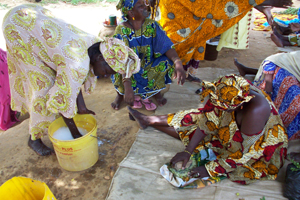
Farmers in the Bakel region in Senegal joined a group of researchers with similar concerns. Together, they looked at ways for grinding enough of the ripe seeds to ensure sufficient oil in the mix. Another improvement they identified was to make sure that the mix is soapy when sprayed. This guarantees that the soap, a potent insecticide on its own, ifs fully functional.
Yet another was to use the mix before the chemicals in the neem are degraded by the soap. The options included adding specific ingredients, such as onion or garlic extracts, that have also been shown to help repel insects. The picture that emerged is broad. With or without neem, farmers have the capacity to produce cheap and effective insecticides. It is scientists who have to match the local knowledge and local possibilities.
This project was conducted through USAID and the National Cooperative Business Association.
More information?
Please write to Paul Wojtkowski.
E-mail: trigo123@hotmail.com
Ethiopia: More hives, more bees
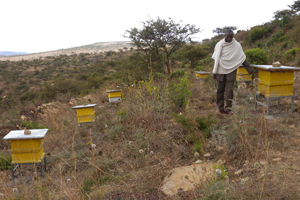
More and more farmers in this region are interested in beekeeping, seeing it as an environmentally friendly business – especially given the relative lack of farmland and the rewarding results which beekeepers have seen in the past few years. Yet there are also challenges, like finding ways to market the produce and identifying the specific techniques for increasing the number of hives in a given area.
The Relief Society of Tigray, REST, is working with many different co-operatives in the region to tackle these difficulties, organising a series of capacity-building courses and providing technical advice. Rearing centres for Queen bees have been established to respond to the growing demand. These also serve as research centres where local adaptations of the “splitting method” are tried.
Helping others by increasing the number of hives is now becoming profitable: different co-operatives, such as the Mayilingo Honey Processing and Marketing Co-operative, are now earning higher incomes from their bees than from their honey.
More information?
Please contact Abraha Lemlem at the Relief Society of Tigray, Ethiopia.
E-mail: labraham356@yahoo.com

